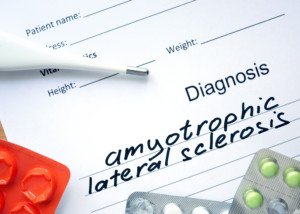
The term “twitching” is ambiguous; there are different kinds.
Certainly, there are variations between ALS muscle twitching and that of BFS.
What are the differences between the twitching muscles of ALS and those of BFS?
“In benign fasciculation syndrome, the muscle twitching is often widespread throughout the body,” says Bonnie Gerecke, MD, director of the Neurology Center at Mercy in Baltimore.
“For example, one can experience twitching in an arm, eyelid, torso or foot,” continues Dr. Gerecke, referring to BFS.
“The twitches in benign fasciculation syndrome are brief and can be frequent.”
You may feel these as very short-lived creepy-crawly sensations, or squiggly worm sensations, right under your skin.
These are especially apparent while you’re sitting still at a computer, while reading or watching TV, and can occur seemingly relentlessly.
With BFS, the twitching will stop the second you begin moving the affected area.
So if the twitching keeps recurring in a hamstring or quad muscle while you’re at the computer, it will stop when you get up and walk, march in place, or even remain seated but bounce the leg up and down.
With benign fasciculation syndrome, you may notice a predictable trigger, namely, whenever your calve muscle twitches, it’s always after you’ve run on a treadmill or used a stationary bike.
Or the twitching that runs rampant in your upper legs and butt always occurs after a rigorous hike. However, benign fasciculations can also occur randomly.
“In ALS, the muscle twitching often starts in one region and spreads locally,” says Dr. Gerecke.
“For example, there can be twitching isolated to the right hand and then it may spread to the right arm and then the left hand and the left arm.
“Also, in BFS, the twitching is not associated with other signs or symptoms.
“In ALS, when a patient experiences muscle twitching, there is almost always associated muscle atrophy (shrinkage of muscles) and muscle weakness.”

Dr. Gerecke has a special interest in ALS, myasthenia gravis, myopathy/muscular dystrophy, peripheral neuropathy and radiculopathy. She is board certified in general neurology and neuromuscular medicine.
 Lorra Garrick has been covering medical, fitness and cybersecurity topics for many years, having written thousands of articles for print magazines and websites, including as a ghostwriter. She’s also a former ACE-certified personal trainer.
Lorra Garrick has been covering medical, fitness and cybersecurity topics for many years, having written thousands of articles for print magazines and websites, including as a ghostwriter. She’s also a former ACE-certified personal trainer.
.
Top image: Shutterstock/Alexander Raths
Muscle Twitching: Is It ALS, Anxiety or BFS? Best Information!


























